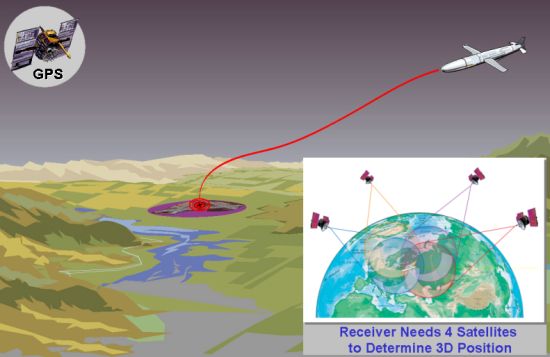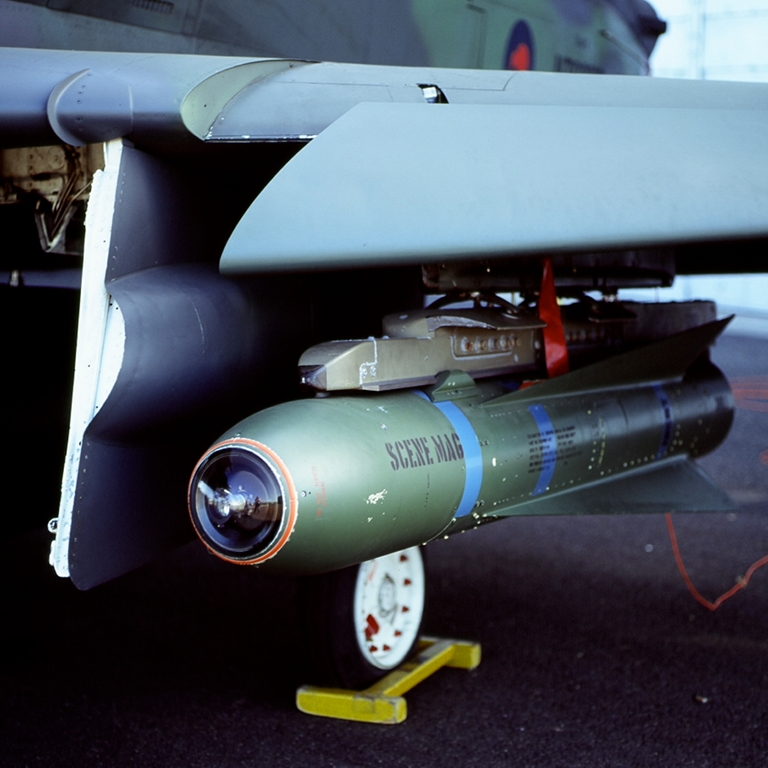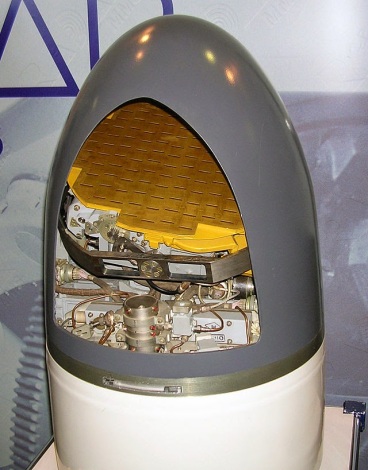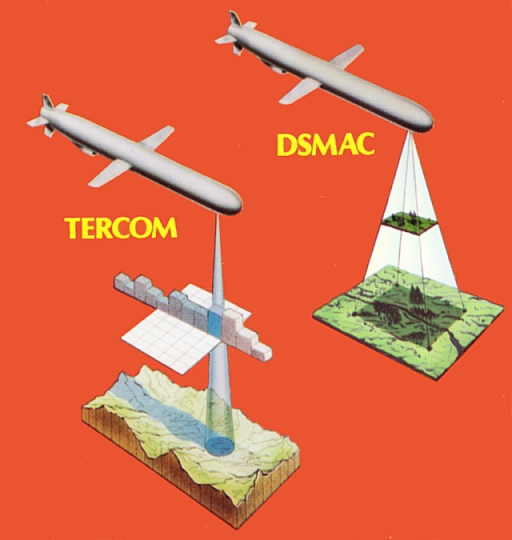Scorpion
THINK TANK: SENIOR
CRUISE MISSILES
A cruise missile does exactly what its name says. It cruises, over land or over water. Its working is similar to a jet engine powered airplane. They were developed in the 1930’s and 40’s and first saw action during World War II where the Nazis used the V1 cruise missile. Since then, it has undergone a major evolution into a lethal weapon in the modern battlefield which is very difficult to escape from. Cruise missiles are either subsonic or supersonic depending on their propulsion and design.
WORKING
TYPES
There are mainly 2 types of cruise missiles. Land attack missiles (LACM) and Anti-ship missiles (AShM)
- LAND ATTACK MISSILES

Tomahawk, the most popular LACM
These are the cruise missiles which are designed to hit stationary or moving targets on land. The first cruise missile used in combat, the V1, was a land attack cruise missile. It was guided by primitive mechanisms which reduced its accuracy greatly. Modern land attack missiles have the ability to take out a building by entering through the window or to hit a single vehicle in a convoy with precision. Such is the improvement made over the years.
Nearly all these missiles cost more than a million dollars apiece. But their accuracy and range have made them the preferred choice of attacking heavily defended targets instead of manned combat aircraft. Only USA and Russia have developed long range land attack cruise missiles which have ranges of 1000-3000 km and can be fired from Land, Ships, Aircraft and Submarines. The rest of the world is playing catch up and it’s only recently that many European and Asian countries have acquired long range land attack cruise missiles which can be fired from multiple platforms.
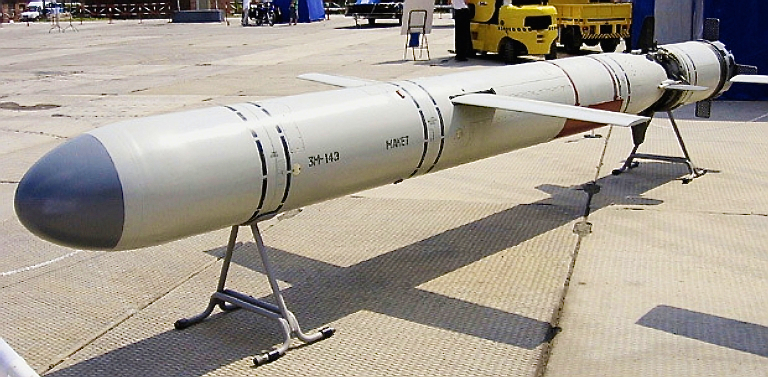
Russian Kalibr LACM
One major user of LACMs is the US. They have fired hundreds of Tomahawk Land Attack Missiles (TLAMs) from ships, submarines and aircraft during the wars in Iraq, Afghanistan and Libya. This tactic, though expensive, proved highly successful as they managed to attack heavily defended targets without risking their fighter pilots. They used the loitering ability and the TV camera of the tomahawk to hit targets with great accuracy and at the optimal time. This made the Tomahawk missile world famous.
- ANTI-SHIP MISSILES

Harpoon, a very popular AShM
Anti-ship missiles are similar in structure to LACMs, but they differ from them in guidance systems and warheads. AShMs were first developed during WW2 but never saw action. But as big guns were becoming obsolete in naval warfare, cruise missiles were preferred as their replacement as they offered a far greater and accurate punch at long distances when compared to the biggest guns in use at that time. The Soviets and Americans built many prototypes, but the Soviets were the first one to equip all their ships with long range anti-ship cruise missiles, most of which were supersonic. The American played catchup for the next 15 years and eventually managed to deploy the Harpoon AShM.

P-15 missile being fired. Image: Bharatrakshak
The first Soviet AShM to be popular was the P-15 Styx. This was a cheap to build missile with a powerful 450 kg warhead and a range of 80 km. This missile was built and deployed in thousands and saw extensive action in wars around the world. Since it was supplied to Soviet allies and friends, these countries managed to inflict massive damage on the navies of countries who were using western equipment. The French Exocet missile also saw huge success in several wars which showed how deadly these missiles can be in a war and that a million $ missile can sink a 500 million $ ship.The success of these missiles in conflict increased the demand for Anti-ship cruise missiles and big guns slowly became obsolete.

Exocet finds its target during the Falklands War
PROPULSION
Jet engines are the main propulsion system for a cruise missile. In jet engines, there are many types which are used on different missiles depending on the requirement.
- Turbofan and Turbojet engines are used in subsonic cruise missiles
- Ramjet and Scramjet engines are used in supersonic and hypersonic cruise missiles
Some supersonic cruise missiles like Klub, make use of a rocket motor in their terminal stage to propel them faster than the speed of sound. But very few make use of rocket motor propulsion as it gives very less range when compared to a jet engine.
SPEED
SUBSONIC

Exocet is a very successful subsonic missile
Missiles that travel at a speed less than the speed of sound (Mach 1) are called subsonic cruise missiles. The advantage offered by subsonic flight is, longer range. All cruise missiles with a range in excess of 800 km are subsonic. Subsonic missiles are comparatively smaller than their supersonic counterparts and offer very long ranges for a fraction of their size. It is easier to shot down a subsonic cruise missile when compared to a supersonic one,
SPEED
SUBSONIC

Exocet is a very successful subsonic missile
Missiles that travel at a speed less than the speed of sound (Mach 1) are called subsonic cruise missiles. The advantage offered by subsonic flight is, longer range. All cruise missiles with a range in excess of 800 km are subsonic. Subsonic missiles are comparatively smaller than their supersonic counterparts and offer very long ranges for a fraction of their size. It is easier to shot down a subsonic cruise missile when compared to a supersonic one,
- SUPERSONIC

The 3M54E Klub (left) has a supersonic terminal stage
Missiles that travel faster than Mach 1 qualify as supersonic missiles. These missiles are used excessively by Russia who depend on the speed of these missiles to evade enemy air defenses. The advantage of this high speed is that the enemy has very less time to react when the missile is detected. The high speed also renders several defense systems useless against these missiles. The disadvantage is that you cannot have a long range supersonic missile without it being of extremely large size.
- HYPERSONIC

Boeing X-51 Hypersonic demonstrator
Missiles which travel at speeds in excess of Mach 5 are termed as hypersonic missiles. These missiles are mostly experimental and are currently not deployed for active use unlike supersonic missiles. USA, Russia, India and China are supposed to have hypersonic cruise missiles under development for active deployment.
FLIGHT TRAJECTORY
The flight path followed by cruise missiles depend on their launch platform, guidance systems and the target.
- SEA SKIMMING / TERRAIN HUGGING

Anti-ship cruise missiles generally follow a sea skimming profile. This means that the missile flies just a few meters above the water surface. This flight profile makes the missile invisible to enemy radar until it is just round 30 km away from the ship due to the earth’s curvature. Flying low delays its detection by the enemy unless the enemy has an airborne radar. But flying low has its disadvantages as well. Fuel consumption is high when following a sea skimming profile. Range at sea skimming height is 30-40% of the range at high attitude flight.
Land attack missiles generally follow a terrain hugging profile. This means that they closely follow the ups and downs of the terrain and remain hidden from detection by radars due to their low altitude.
- MIXED ALTITUDE PROFILE

Mixed altitude path of BrahMos . Image © Ria Novosti
Many cruise missiles follow a mixed trajectory. Once they are launched, they fly at high altitude for optimum range and when they approach their target, they climb down to a few meters altitude and make their final approach towards the target. This offers the range advantage of high altitude flight and the radar evading ability of the sea skimming flight. Many modern cruise missiles follow this flight profile and some of them go supersonic at the terminal sea skimming phase.
- HIGH ALTITUDE PROFILE
Some cruise missiles fly exclusively at a high altitude and then dive down towards their target. This flight profile gives a very long range to the missiles as the thin air at high altitudes gives very low resistance to the flight of the missile and reduces fuel consumption of the engine. The disadvantage of this flight profile is that the missile becomes easy to detect and shoot down.
LAUNCH PLATFORMS
LAUNCH PLATFORMS
- AIRCRAFT
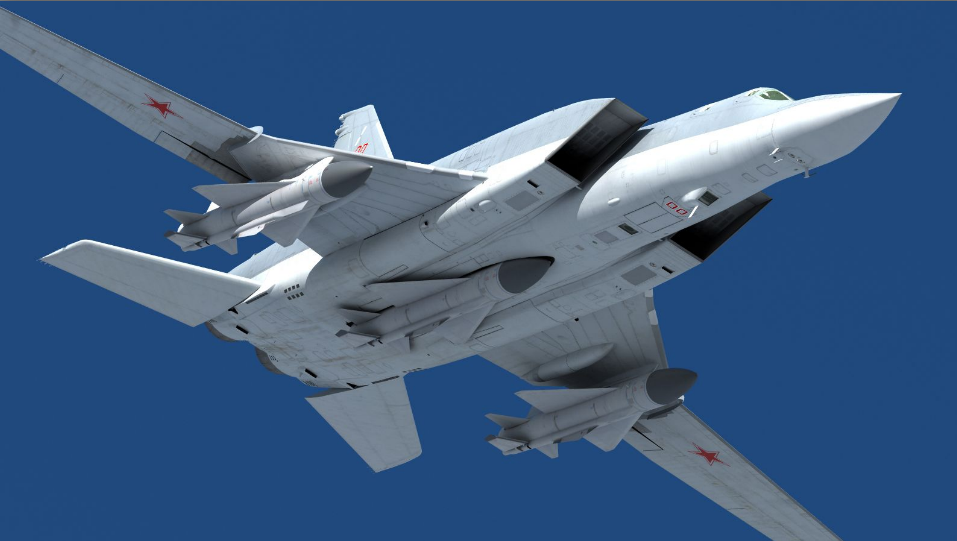
Graphic of Tu-22M3 with ‘Kitchen’ AShM. Image © pcpilot.hu
Airplanes are very fast and flexible launch platforms for cruise missiles. They are mainly used to fie anti-ship cruise missiles. It is because the aircraft can launch a missile at a target, far from its base or carrier and return back to base within minutes. Other platforms don’t have this much speed. The effectiveness of this platform has been exhibited when Exocet missiles fired from fighter aircraft were able to destroy several British warships during the Falklands war. Large bombers are often used as cruise missile carrier and examples like the Russian Tu-95/160 and the American B-52 can carry around 15-20 cruise missiles and serve as airborne missile batteries.
- GROUND VEHICLES
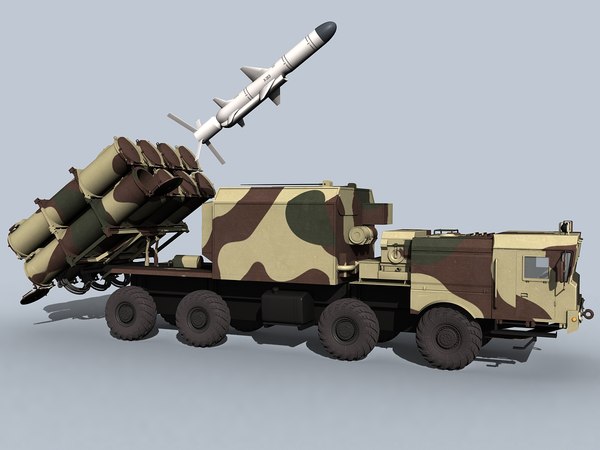
The Kh-35 AShM mounted on a truck
Trucks and fixed launchers are used to launch cruise missiles on land. Trucks are used extensively because of their mobility and the ability to deploy them at any required place in a conflict. Land attack missiles and Anti-ship missiles are truck based and are used to attack high value enemy ground assets and for shore defense respectively.
- SHIPS
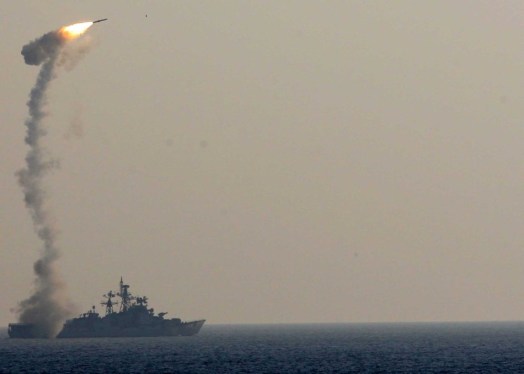
BrahMos missile fired from a Rajput class destroyer
Ships carry a huge number of cruise missiles when compared to land and air based platforms. Anti-ship missiles are carried to sink enemy ships in battle and land attack missiles are carried to attack enemy targets on land, far away from the reach of land based platforms. US Navy is the only one in the world whose entire fleet of destroyers and cruisers can carry long range Tomahawk land attack missiles. The usefulness of this ability was proved in the Gulf war when these ships fired hundreds of cruise missiles at enemy targets on land. Russian Navy ships are generally regarded to have the best anti-ship capability in the world with their supersonic missiles fitted on nearly all their major warships.
- SUBMARINES

Submarine launch of Tomahawk. Image © General Dynamics
Submarines are a very stealthy and dangerous platform for launching cruise missiles because they can fire these missiles while still underwater and then disappear to great depths. This makes it difficult to detect and eliminate this platform in a war. They can fire cruise missiles either rom their torpedo tubes or from Vertical launch cells which are specially fitted. The nuclear powered American Ohio SSGN carries 154 Tomahawk LACMs and the Russian Oscar SSGN carries 24 long range Granit AShMs. Modern subs like Yasen class can carry a mix of LACMs and AShMs in their VLS. These capabilities can prove deadly to the enemy in a conflict.
LAUNCHING TECHNIQUES
- COLD LAUNCH

Cold launch of Tomahawk from Ohio class SSGN
In this technique, the missile is ejected from its launch tube using compressed air. The missile boosters fire once the missile is ejected clear of the ship. Since the missile booster is not ignited in the launch tube itself, the launcher and its surroundings don’t get heated up. Hence the launch is termed as a cold launch. Cold launch is considered to be a safer way of launching missiles as there is no chance of accidental detonation of the missile when it exits the launcher because the missile boosters aren’t ignited till it clears the ship. It is used in Surface to Air missiles (SAM) on ships and extensively for Cruise missiles on submarines.
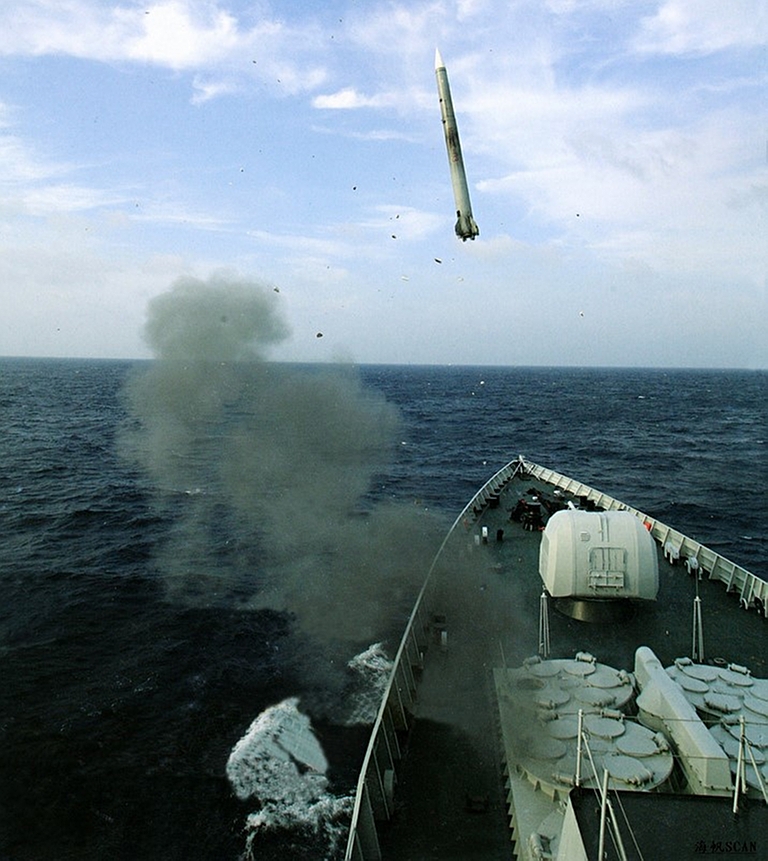
Cold launch of a SAM
- HOT LAUNCH
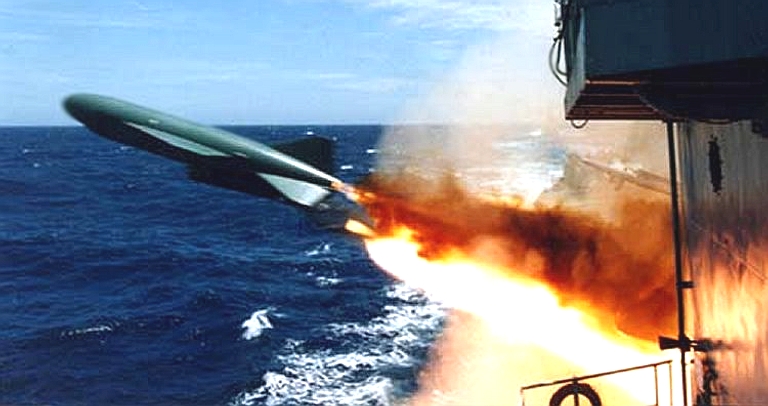
Silkworm Missile
In this technique, the missile booster ignites when the missile is in its launcher itself. The missile is thrust out of the launcher under its own propulsion. This type of launch gives what is known as a back blast and heats up the launcher and its surroundings. Hence it is termed as a hot launch.
TYPES OF LAUNCHERS
- ANGLED TUBE LAUNCHERS

Angled Kh-35 tube launchers
This type of launcher was the earliest one where the cruise missile was mounted in a missile tube at a particular angle. When the missile was fires, it exited the launcher in the same direction. To fire the missile at a direction other than forward of the launcher, the entire ship had to be turned towards the target. This made it a slow and non-flexible launcher and the angled tubes also occupied a large amount of space. This launcher was extensively used in the 20th century, and has been replaced by modern vertical launching systems nowadays. But there are modern angled launchers as well. These have missiles which can change direction immediately as they exit the launcher and clear the ship. The advantage of these launchers is that they do not require any deck penetration and ca be easily fitted on any warship with enough deck space .Thus the angled launcher continues to find a place in navies all over the world.
- TRAINABLE BOX LAUNCHERS

Tomahawk armoured box launcher
This type of launcher was used extensively by the US Navy for firing their cruise missiles. Their frigates and destroyers during the 70s had one or two sets of box launchers which consisted of 8 boxes of cruise missiles each. These launchers could be trained to fire in a required direction unlike tube launchers which are stationary. They were fitted with Harpoon and Asroc missiles. Box launchers were earlier used for Tomahawks as well. Royal Navy also used box launchers for their Exocets. But they were bulky and did not justify the space they occupied and were replaced by vertical launchers.
- VERTICAL LAUNCHERS

US Navy Mk-41 Universal VLS
This is currently considered as the holy grail of missile launching systems. It eliminates all the disadvantages of the other 2 types of launchers. It has become very widespread, especially among the top navies in the world owing to its simplicity, flexibility, size, lack of moving parts and the ability to fire missiles faster than any type of launcher. The missiles are just stored in canisters in these vertical launch cells and they don’t need any maintenance.
Vertical launchers generally have different types of launchers for different missiles. But the US were the first to introduce the concept of universal vertical launching system which allows the same launcher to carry a variety of missiles including surface to air missiles. This has been installed on a large number of vessels of various countries. Countries like Russia and China have now developed these UVLS which has gained a lot of popularity owing to its advantage of high flexibility and will be the most popular missile launcher in the future.

